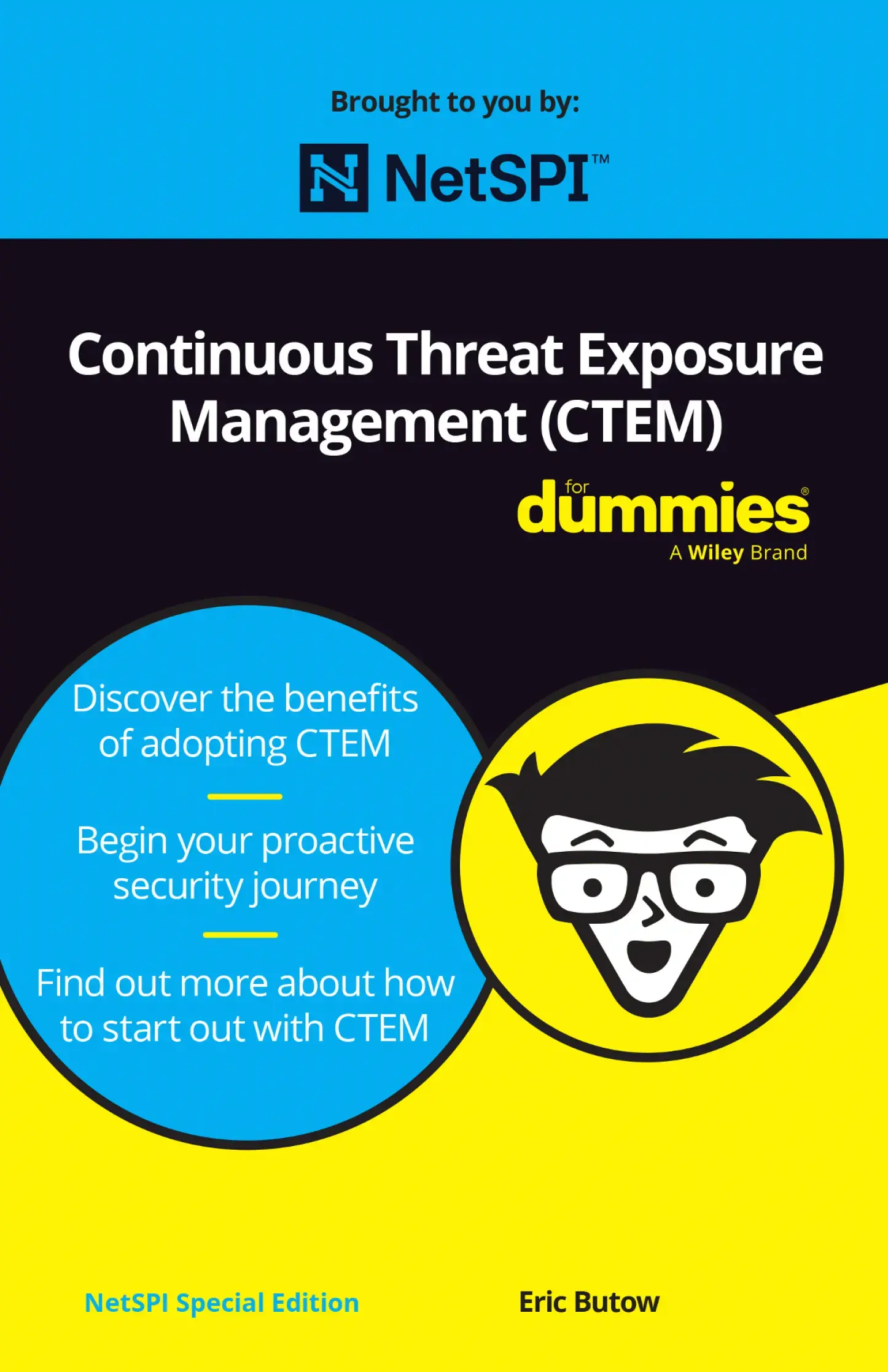
Why NetSPI?
In today’s digital world, securing your organization’s most valuable assets is essential. At NetSPI, we go beyond data protection—we safeguard the trust you’ve built with your customers and team. Leveraging AI-led solutions and human expertise, our proactive approach helps you stay ahead of evolving cyber threats, empowering your business to innovate with confidence.
Securing the Most Trusted Brands on Earth
%
Largest
Cloud Providers
%
Top U.S.
Banks
%
World's Largest
Healthcare Companies
%
MAMAA
Tech Giants

NetSPI Publishes Continuous Threat Exposure Management (CTEM) For Dummies
The NetSPI Platform
Penetration Testing as a Service
Pentesting at Scale | Leveraging Vast Expertise
Work with a Dedicated Client Delivery Manager that runs the testing processes end to end.
Gain unmatched depth and breadth of testing with over 300 in-house security experts.
PTAAS Integrations
Easily integrate workflow tools (ticketing and SIEMs) and accelerate remediation with real-time reporting.
External Attack Surface Management
Always-on external attack surface discovery, testing, and validation.
Develop a comprehensive map of your organization's assets and external attack surface.
EASM Integrations
Integrate directly with your ticketing, SIEM, and other systems to drive workflows.
Reduce alert fatigue with NetSPI's expert validation, leaving you with ZERO false positives.
Validate and prioritize exposures in your external facing assets for fast remediation.
Cyber Asset Attack Surface Management
Real-time internal attack surface visibility, correlation, and contextualization.
NetSPI CAASM discovers and monitors assets, security controls coverage gaps, and enables risk-based remediation in real-time across your entire attack surface.
Identify, validate, and prioritize remediation of your control gaps and other exposures.
Discover your unknown unknowns, inventory internal assets and their security posture.
Visually explore asset risk to enable better threat modeling and investigations.
Breach & Attack Simulation as a Service
Simulate cyberattacks to validate the efficacy of security detection controls.
NetSPI's BAS experts partner with your SOC to ensure efficacy of controls in a purple team-like evaluation.
Security Detection Controls
Integrate directly with your security controls to compare coverage and identify gaps in your detection systems.
Execute simulations, agents, and playbooks against your security controls to continuously improve.
BAS as a Service Simulation Packs
Validate and prioritize gaps in your detection systems with these real-world simulation packages.


“NetSPI has not only delivered some of the most actionable and insightful recommendations through the course of the engagement but has also been very collaborative in how we can improve the true program.”












